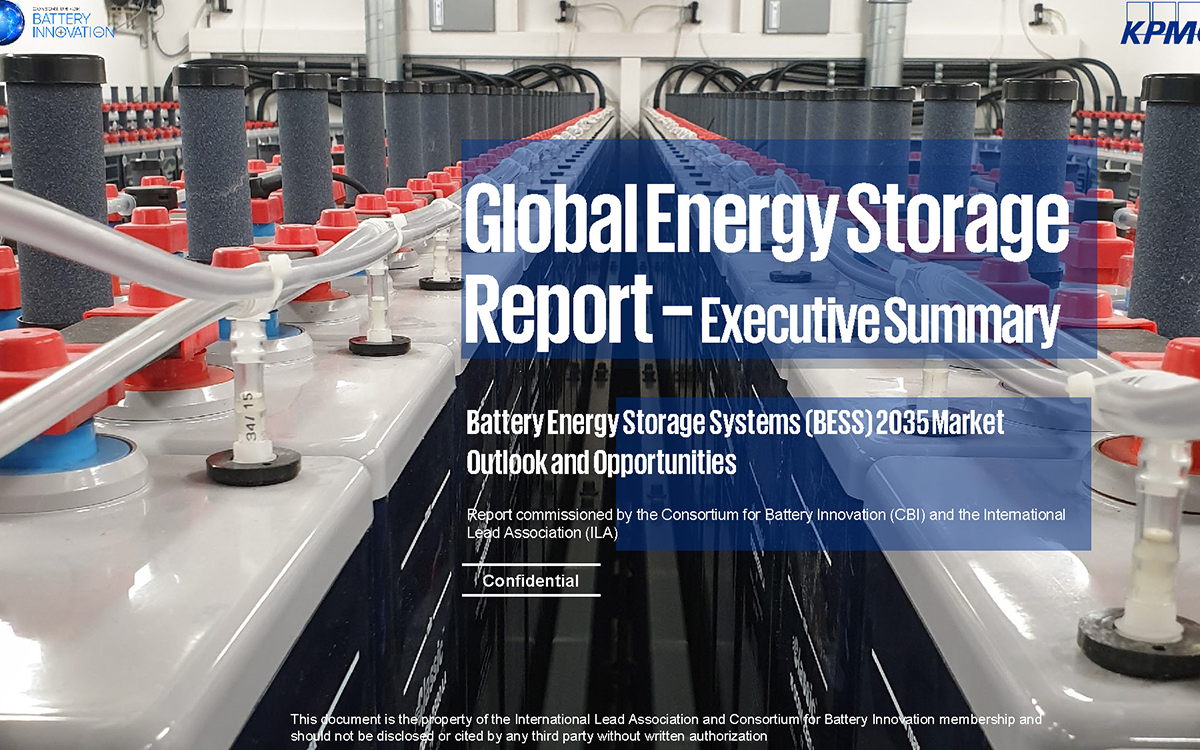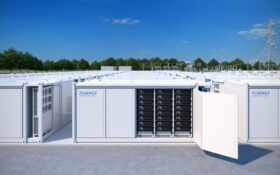
Nearly all electrical sub?stations have two sources of supply, so that if one set of overhead lines fails the supply to the substation remains consistent. Those businesses for whom a power loss would be catastrophic have in turn bought into the process to provide themselves with further levels of security.
However, the breakdown of our electrical supply networks would still have disastrous consequences. The practical way in which you plan for these risks is by having standby or fully-redundant power supplies in place. These normally come in the form of batteries, generating-sets or a combination of the two.
In a bank, for example, one would typically find a battery-powered UPS, which would instantaneously take over if the electricity supply from the grid failed. There would also normally be a diesel generator that would run for as long as it had a fuel source. Its purpose is to take over as medium-term supply once the battery has done the job of managing the immediate problem.
You could look on standby power as a form of insurance; it guarantees your process or business against the dangers of a loss of supply. However, unlike insurance, where you pay a regular premium in exchange for the financial resources needed to recover from the disaster you are planning to mitigate for, standby power actually protects against the dangers of a power outage when it happens.
We can see the importance of the diesel generator’s reliability at the Fukushima Daiichi nuclear disaster. The tsunami broke the reactors’ connection to the power grid, causing them to overheat. The flooding and earthquake damage hindered external assistance and the diesel generating sets only had between 24 and 28 hours of fuel. When it ran out they could no longer run the cooling systems for the power plant.
Lock-in your load
Clearly then, there is the need to ensure that the ‘insurance’ we put in place to mitigate for the failure of the power supply, is managed. Supplying sufficient fuel to run the equipment for an extended period is the first and most basic requirement. However, in addition one should also ensure that the generator is tested regularly. The price of doing so is trivial compared with the cost of the generator failing when it is called upon.
Furthermore, the testing methodology employed is also critical. It is insufficient to simply turn the motor on once a month to see if it works. Equally, you do not want to interrupt the power supply to your hospital, financial centre or other critical applications once a month by connecting the generator to run a test!
One of the principle reasons for not adopting the ‘once a month’ testing strategy is that it can create significant problems for a diesel generator. Diesel engines that are regularly run on very low loads – or no load at all – become increasingly unreliable and costly to maintain.
The effects include smoky exhausts, carbon build-up, fuel system problems and lubricating oil deterioration, all of which decrease reliability and add to running costs. All of these consequences can be largely avoided if the set is regularly operated on a load of 20-40% of its rated power.

For any standby generating set, routine testing which includes on-load running to bring the engine, alternator and radiator up to normal working temperatures, is a better option, offering a much higher degree of certainty that the set will perform as expected in a real power outage.
The purpose of this process is to bring the generator up to its operating temperature. If you started your car every morning but did not go anywhere it would gradually get gummed up and problems would arise. In contrast, if you started it and drove a couple of miles each day, it would continue to function at something close to optimal efficiency. Generators work in exactly the same way.
Many large users of generating sets, particularly the water, power and tele-communications utilities, are now fully persuaded that the relatively low cost of including a fixed load bank at the time of installation is justified by the saving in maintenance costs (including the costs of regular load bank hire or purchase) over the life of the set. However, there are still countless standby generators going untested that may or may not work in the event of a power outage.
Have we forgotten the power of insurance?
When I came to write this article, it occurred to me that if power outages were more common, the value of a standby generator and associated load bank would be more clearly understood in both the built environment and industry. The black-outs in New York and London several years ago were clear reminders to us all, but my perception is that since then the profile of this corner of our industry has dipped.
Not so. A Google search reveals several separate incidents in the months before the time of writing – and these are on the first page of search results alone. However, only two of these mention standby power. It seems that while we may not have forgotten the consequences of losing supply, we have forgotten the power of insurance.
For many years it has been routine for all newly-installed generating sets to have a load test during the commissioning process in order to prove the performance of the set and all its ancillaries – the cooling system, exhaust system, switchgear and protection scheme. However, the very infrequency of power outages in most developed countries, and thus the rarity with which standby sets are called on to run ‘for real’, makes regular proving essential if sets are to operate reliably when needed.
When using mobile equipment, these tests have traditionally been performed by contractors who visit the site, bringing with them a portable load bank. However, we have recently seen instances of very high profile financial and telecoms firms investing in their own portable load banks and in many cases still using the same contractors to test.
Added to those instances of fixed load banks for routine testing we have always seen, there is evidence that many high profile companies have woken up to the importance of regular testing of standby power. This represents a big step forward from the days when testing would only be performed on installation.
Fixed versus portable load banks
Adding a fixed load bank to a generator at the time of installation is much less expensive than retrofitting one. The principle reason is it provides the opportunity to fit the unit in the air inlet between the radiator and the acoustic splitter. This means you can use the inlet for cooling, which will reduce long term fuel costs as well as initial capital expenditure.
A further benefit is, if you install a load bank in front of the radiator, it does not make any additional noise, because there is no extra cooling. However, if you fit one externally, you will need to measure the noise emissions to make sure it does not exceed the environmental demands.

However, in most retrofit projects there is not sufficient space in front of the radiator to do this. The most convenient location is often the plant room but in applications where space is at a premium, the roof of the building can also be used. This is normal in applications at financial institutions, which are often located in major cities.
Another way of reducing capital expenditure is to use a single load bank to test multiple generators, or multiple generators and a UPS, in sequence. Again, by considering testing at the planning stage it is easy to build this into the system.
In some cases there is a further benefit in that the same load banks can be used as a ballast load during normal operation of the generating set. In those applications where the connected load may vary over a wide range, either as a result of seasonal variations or the nature of the load itself, when the ‘real’ demand is small it can be beneficial to add some additional load to keep the engine operating at least at 20-40% of its capacity.
If a load bank is incorporated into the set when it is built, the only addition needed to the control scheme is a load-sensing relay in the generator control panel.
Cressall Resistors’ load banks for fixed installations are designed as an installations stage bolt-on addition to the set, requiring a space of 400 – 800mm between the radiator and the acoustic splitters. The resistor elements themselves are type HPR stainless steel grids. These have a large surface area, with a typical power density of 1-2W/cm2 and a low pressure loss: about 10-20Pa (1-2 mm water gauge) in the radiator airflow.

The grids are assembled in banks with ceramic insulation rated for 1kV operation. Because the load bank makes use of the radiator airflow for cooling, the basic design is simple, low-cost and adaptable to almost any engine.
Most standard generating sets in the 50-1000kW range have radiators with a free pressure loss of at least 125Pa, so a load bank can be added without the need for modifications to the basic design or an increase in the rating or cost of the acoustic splitters.
Where power ratings of more than 50% of a genset’s capacity are required, or where a single load bank is installed to serve multiple generating sets, other cooling arrangements can be used, such as using the existing plant room fans.
A good example of Cressall’s standalone load banks is the AC100, designed for testing three phase generating sets of up to 100kW rating. It uses metal sheathed wire elements manufactured from high-grade nickel/chrome resistance materials in magnesium oxide insulated stainless steel tubes and 600V primary insulation.
It is fan cooled with a single 450mm fan powered from the test load itself or an external supply. The fan is mounted in the base of the load bank and blows vertically through mesh bird screens at the top and bottom. Cressall Resistors has supplied many such loads for these applications, with power ratings ranging from 5kW up to 2MW. Customers include genset builders, contractors and end-users themselves.
Commissioning a load bank

The things to consider when commissioning a load bank are relatively straight forward. It has to be the correct power rating and it has to be as big as is necessary but not bigger – this is particularly true if you are the person paying for the fuel! To determine this simply refer to the continuous rating of the generating set or UPS.
You should choose a load bank that can bring the generator up to full power, which normally means providing 20-40% of the overall rating. So, for example, for a 5 500kW application a 1 245kW load bank would be adequate.
I would also recommend consulting an expert supplier, so they can design a load which will operate satisfactorily in the air flow provided by the generator’s radiator.
Throughout this piece I have referred to two concepts, the mitigation of failure and the idea of a load bank being like an insurance policy. Ultimately, both ideas stand up to examination. Buying a generating set but not testing it, is like buying insurance but not making sure that your certificate is valid when you receive it.
More worryingly it also means you are recognising the likelihood of failure in the electrical supply network, which is increasing as our substation and generation infrastructure ages, but undermining your own preparations for it.











